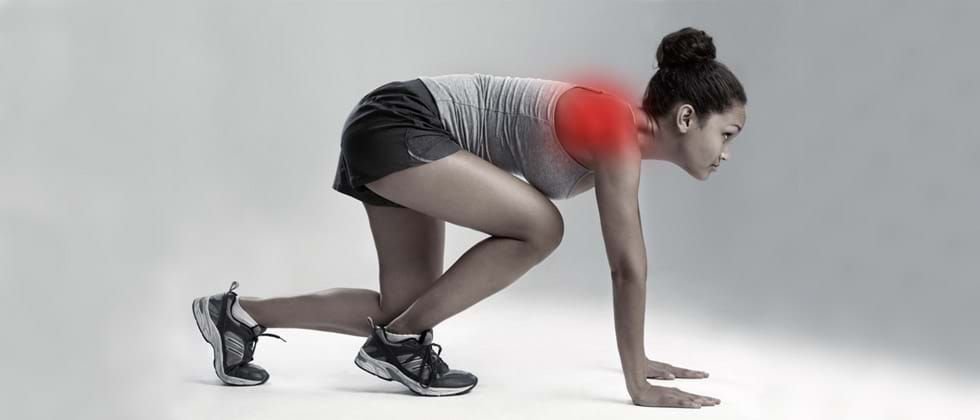Whether it’s a cardio circuit, weight routine or yoga, workout-based injuries can get in the way of your progress as you take down time to recover. That said, for every injury there are easy ways to avoid them.

Lower back stress
Moves like squats and deadlifts are very effective, but also very prone to lower back injuries. The easiest way to avoid this is to first establish proper form through a neutral back. The neck should stay in line with the spine and you should engage your core to help avoid a concave spine.

Rotator cuff strain
Rotator cuff injuries are often caused by overuse of the four muscles that support the shoulder joint, leading to inflammation and muscle strain. Prevention comes in two parts: warming up and strengthening those muscles.
Do some dynamic warm-up stretches like shoulder rotations to prep the joint. Then, when hitting the weights, avoid doing too many overhead exercises. Instead, train the muscles below shoulder level doing things like forward raises. Start with lower weights and higher reps.

Shin splits
Shin splints are something that runners know too well. It’s that sharp pain that you feel across shins due to irritated muscles that support your tibia (shinbone).
Aside from proper warm up and stretching, it’s important to wear proper runners that support that ball of your foot and your heels. This way, your shins get the support they need so you can keep powering on.

Wrist strain
Part of weight lifting is the repetitive lifting and curling. With these movements, it’s easy to have the wrist flex at the wrong angle. In this case, you should work to maintain a neutral wrist that stays in line with the forearm. Also, take your time with each rep.

Dizziness
This might not be the common muscle strain, but dizziness is a serious issue. At the gym, you’re exerting yourself and your body is expelling lots of fluid (sweat!). So, remember to bring a bottle of water with you to the gym or visit the water fountain in between each set. Your body will thank you for replenishing it.
At the end of the day, the most important safety tip is understanding your body and its limits. Pace yourself, stop if you feel any pain and take the appropriate time to recover.
